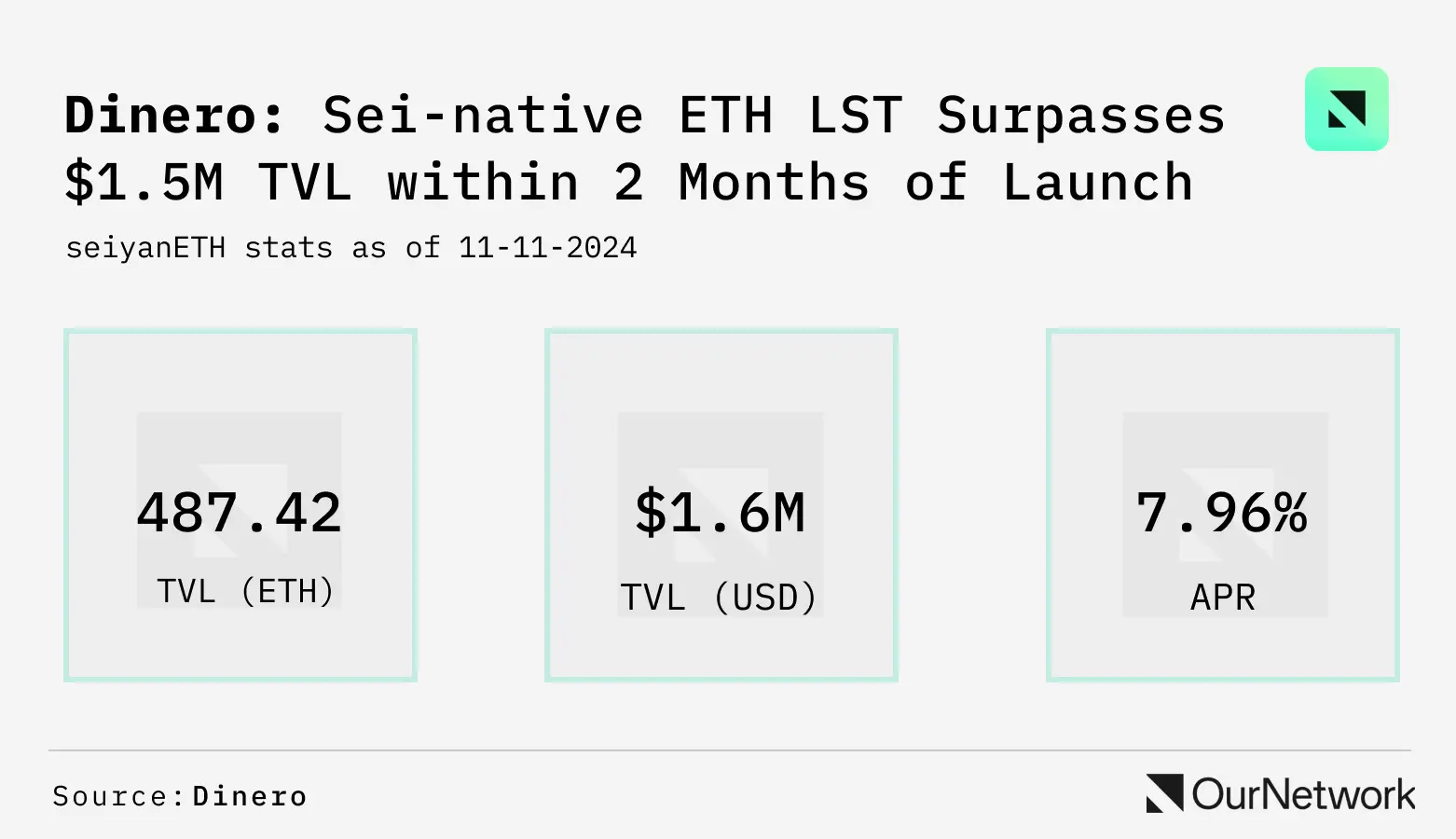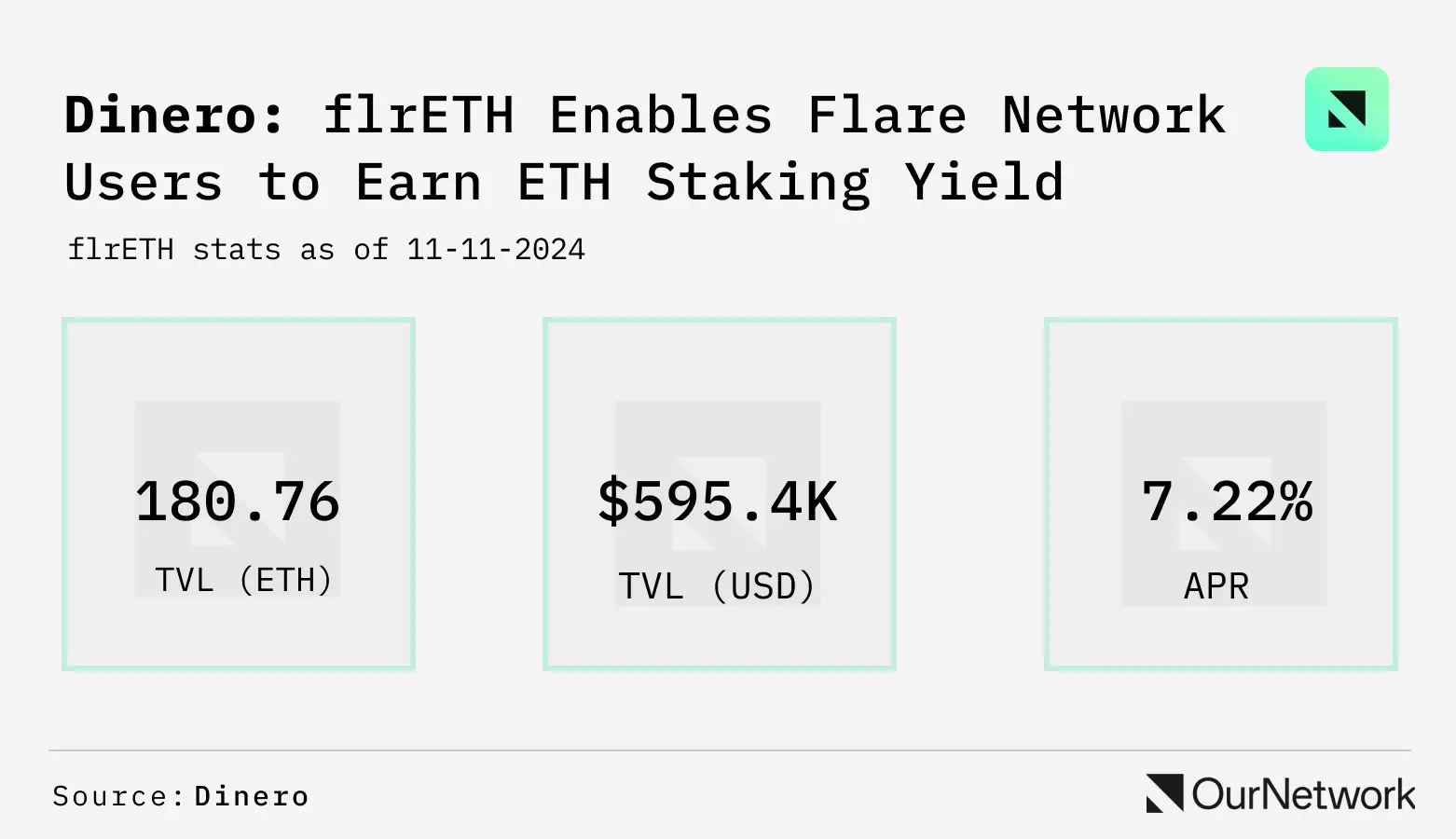Liquidity pledge data special: Jito liquidity reaches 72 million USD, and Rocket's daily inflow of staked ETH reaches 12,000
Original Title: "ON--290: Liquid Staking"
Author: OurNetwork
Compiled by: Shenchao TechFlow

Liquid Staking
Jito | Rocket Pool | Dinero
Jito
Solana remains the most promising ecosystem for liquid staking tokens, with a liquid staking rate of only about 7%.
- The Jito network is a set of decentralized protocols based on Solana, primarily focused on maximizing extractable value (MEV) and DeFi infrastructure. The liquid staking token (LST) JitoSOL is the largest DeFi protocol on Solana, with deposits of 14 million SOL, making it the largest LST in the network's history, accounting for over 50% of the Solana LST market. JitoSOL plays a key role in Solana's DeFi ecosystem, with 25% of its total locked value (TVL) used as collateral for various protocols. JitoSOL-SOL is the most liquid trading pair on Solana, with liquidity reaching $72 million.

- With the support of the Jito-Solana client, MEV tip income is gradually increasing as a share of validator income, allowing the annual percentage yield (APY) for LSTs delegated to validators through the Jito block engine to exceed 8%. As memecoin trading and other activities increase on Solana, MEV trading volume will also rise, further enhancing yields.

- Currently, the LST market penetration rate for Ethereum is about 35%, while Solana is around 7%, nearly doubling year-on-year. Despite the low barriers to user interface and experience for native staking on Solana, there are no strong reasons to suggest that the percentage gap in LSTs between these two ecosystems will not eventually narrow.

- Trading Focus: Want to predict the future? Check out this wallet: six-figure meme tokens, six-figure JitoSOL, and six-figure stablecoins. A perfect balance, just as it should be.
Rocket Pool
Rocket Pool's ETH staking inflow peaked at 12,500 per day, double the highest value so far this year.
- Rocket Pool is currently the second-largest liquid staking participant, with a market share of about 7%. Over the past week, total locked value (TVL) grew from $3.2 billion to $4 billion, an increase of over 30%. This coincides with a rise in APY, which had been in long-term decline but has now rebounded to 3%. The average node staking rate is 33%, with an average staking amount of 4,400 RPL tokens and an average of 94 ETH staked. Among the liquid staking tokens (LSTs) that make up dsETH, rETH has the largest allocation at 23%, with dsETH being an ETH LST basket developed by Index Coop.

DeFiLlama \& Dune - @rp_community

- Over the past week, the price of RPL increased by 20% to $11.80, coinciding with the surge in ETH staking inflows. Notably, this inflow is nearly three times the last surge in inflows at the end of November 2023. Additionally, there were no weeks with net inflows from January 24 to September 24.

- Rocket Pool's developer activity significantly increased in 2024, peaking in July with over 150 daily submissions, but has since dropped to about 30 per day.

Dinero
pxETH staking volume surpasses 30,000 ETH
- Over the past six months, deposits for Dinero's liquid staking product pxETH have increased from 7,706 ETH to 30,393 ETH, a growth of 294%, reflecting strong market demand for higher ETH yields. Due to the design of pxETH, it offers an annual percentage rate (APR) of about 7% for ETH staking, which is double the industry average.

- Compared to other liquid staking options, the system's yields are particularly outstanding. The dual-token design of pxETH allows Dinero to expand yields at both ends of the risk curve (DeFi and staking) rather than compressing yields for both types of users.

- To expand Dinero's LST yields across different blockchains, branded LSTs have been launched. This is a liquid staking solution that allows L1 and L2 networks to launch native LSTs backed by staked pxETH. Early partners include Arbitrum (orbETH), Sei (seiyanETH), and Flare (flrETH), with Sei and Flare already live.


- Trading Focus: Branded LSTs leverage LayerZero's cross-chain messaging protocol. Users can choose to deposit from the Ethereum mainnet and use LayerZero to mint "partnerETH" on partner networks, or they can deposit directly on partner networks. In either case, the branded LST solution handles all cross-chain activities and staking operations, allowing users to start earning staking yields simply by depositing.
ChainCatcher reminds readers to view blockchain rationally, enhance risk awareness, and be cautious of various virtual token issuances and speculations. All content on this site is solely market information or related party opinions, and does not constitute any form of investment advice. If you find sensitive information in the content, please click "Report", and we will handle it promptly.









